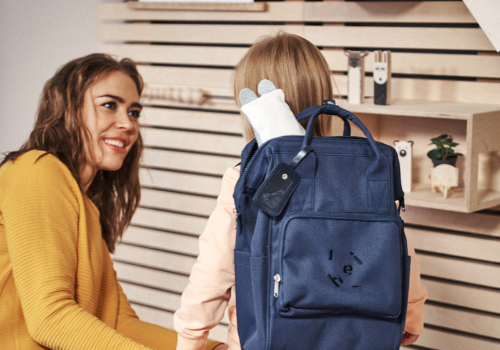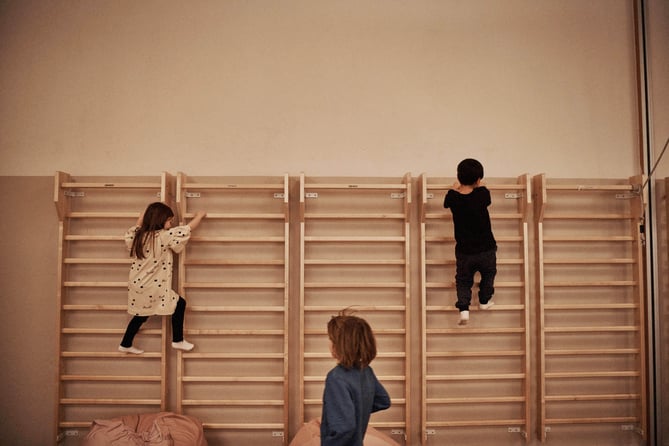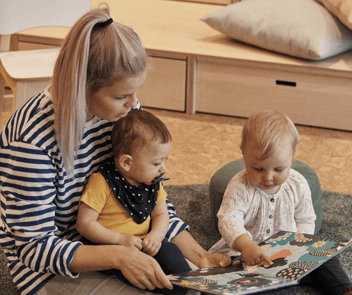My Experience with Finnish Early Childhood Education

As a mother of a two-year-old boy, I have thought about finding a daycare for him since he was born. Coming from China where it is usually a long and difficult process, I thought that this would also be the case in Finland. But when I started to research options here, I found that there was no need because all of the daycares are highly qualified. Finnish parents greatly respect and trust their education system, and the only thing they consider when choosing a daycare is the distance between home and school.
My name is Qing and I am originally from China. I worked at a university for many years in my home country where getting a good education is one of the highest priorities for every family. Ever since I moved to Finland four years ago, I have heard a lot about the differences between the Chinese and Finnish education models. This, along with my son’s birth, inspired me to do some of my own research, which I will share with you today.
Finland’s Education System Appears in Many of the Top Rankings
One of the first facts I discovered about Finland’s education system is that it is highly acclaimed throughout the world. It appears in many of the top educational rankings. For example,
- The Economist Intelligence Unit ranked Finland #1 in their benchmarking of early childhood education across the world (2012).1
-
The World Economic Forum ranked Finland #1 in the world for the best primary education (2018).2
-
INSEAD ranked Finland has the best university/industry research collaboration. 3
-
This is Finland stated that Finland remains among top nations in PISA education survey for 20 years.4
-
The UN ranked Finland as the world’s most literate nation (2018).5
-
The Economist ranked Finland #1 in their Educating for the Future Index (2019).6
-
The OECD ranked Finland #2 in the world for highest performing graduates (2019).6
-
According to Eurostat, 68.7% of adult Finns participated in informal learning during the past year, compared to the EU average of 59.9%.6
Letting Children Play in Finland
 Besides its impressive educational rankings, Finland has been named the happiest country in the world for the fourth year in a row. This contentment is evident in the country’s approach to education as well. Everyone knows that children are at their happiest (and healthiest) when they play, and Finland’s model for early childhood education (ECE) follows that natural instinct. In Finnish kindergartens, children’s playtime is deliberately extended until the start of primary school. Even then, students do not receive much homework before the age of 14 years old.
Besides its impressive educational rankings, Finland has been named the happiest country in the world for the fourth year in a row. This contentment is evident in the country’s approach to education as well. Everyone knows that children are at their happiest (and healthiest) when they play, and Finland’s model for early childhood education (ECE) follows that natural instinct. In Finnish kindergartens, children’s playtime is deliberately extended until the start of primary school. Even then, students do not receive much homework before the age of 14 years old.
However, this fact was quite surprising to me. How does this play-based approach lead to the highest-performing education system in the world? In my mind, high-performing children spend time studying, which usually means boring exercises, long periods of sitting and tough competition. Play and study are contradictory concepts.
Upon further research, I found that Finland’s play-based approach works. Play-based learning is a way of utilising play in daily activities to support children’s learning and development. It follows children’s natural ways of learning, makes them excited to learn and builds a good foundation for lifelong learning.
Lifelong Learning in Finland
 The Finns’ love of lifelong learning is further proof of their educational success. In Finland, it is quite normal for adults to continue studying after graduation. They study not because of job requirements or competition but because they believe continuous learning is beneficial. Some Finns study simply because they want to develop a deeper understanding of the newest trends in various fields. Others choose to pursue higher education or a completely different profession in their 50s or 60s.
The Finns’ love of lifelong learning is further proof of their educational success. In Finland, it is quite normal for adults to continue studying after graduation. They study not because of job requirements or competition but because they believe continuous learning is beneficial. Some Finns study simply because they want to develop a deeper understanding of the newest trends in various fields. Others choose to pursue higher education or a completely different profession in their 50s or 60s.
My former colleague is a perfect example of lifelong learning in action. She was a senior human resources specialist for many years, but at 45 years old, she decided to quit her job to study accounting. It had always been her dream. She spent two years studying full-time before starting to work as an assistant accountant. I bumped into her on street last year, and she looked so happy. She told me that she was already promoted to an account specialist! Her motivation for lifelong learning paid off.
I read a similar story in the Finnish newspaper Iltalehti. A nurse decided to quit her job at 40 years old, and she was planning to spend six years studying in order to become a doctor. Being a nurse had been her dream job, but after so many years, she felt that she had done all she could and it just wasn’t challenging anymore. She wanted to try something new. Set to qualify as a doctor at 46 years old, she will still have twenty years left to work before retirement. For her, it made sense to keep on learning.
While these life-changing stories don’t happen everyday, they are representative of Finns’ attitude toward lifelong learning. I find this phenomenon fascinating, and of course, such opportunities are made possible with the support of welfare policies. However, the key to such an approach is having the capability and motivation to continuously study. Finns just love to learn.
Developing A Love of Learning in Early Childhood
Such a passion for lifelong learning is developed during childhood. Because the first 6 years of learning decide the next 60 years of life, a child’s early years are an important stage. In Finland, the early education system takes full advantage of that sensitive period to help children develop their motivation, skills and love of lifelong learning.
All in all, when it was the time for me to choose a daycare for my son, I chose the one closest to my home, just like the Finns.
Do you want to learn more about Finnish early childhood education?
Read more about the HEI Schools Curriculum and sign up for our informational newsletter about early education today!
Resources
- Starting well: benchmarking early education across the world. c2012. Economist Intelligence Unit. [Accessed 2021 October]; 42:15.
- Global Competitiveness Index 2017-2018: Primary education. c2018. World Economic Forum. [Accessed 2021 October].
- The Global Innovation Index 2016. c2017. [Accessed 2021 October]; 451:354.
- FINLAND REMAINS AMONG TOP NATIONS IN PISA EDUCATION SURVEY, Finland Promotion Board (2019), This is Finland.
- Finland ranked the world's most literate nation. The Guardian (2016).
- The Finnish education system and education services and solutions. Finland Toolbox (2021).



.png?width=352&name=Myth%20VS%20Reality%20about%20Finnish%20Education%20(2).png)

